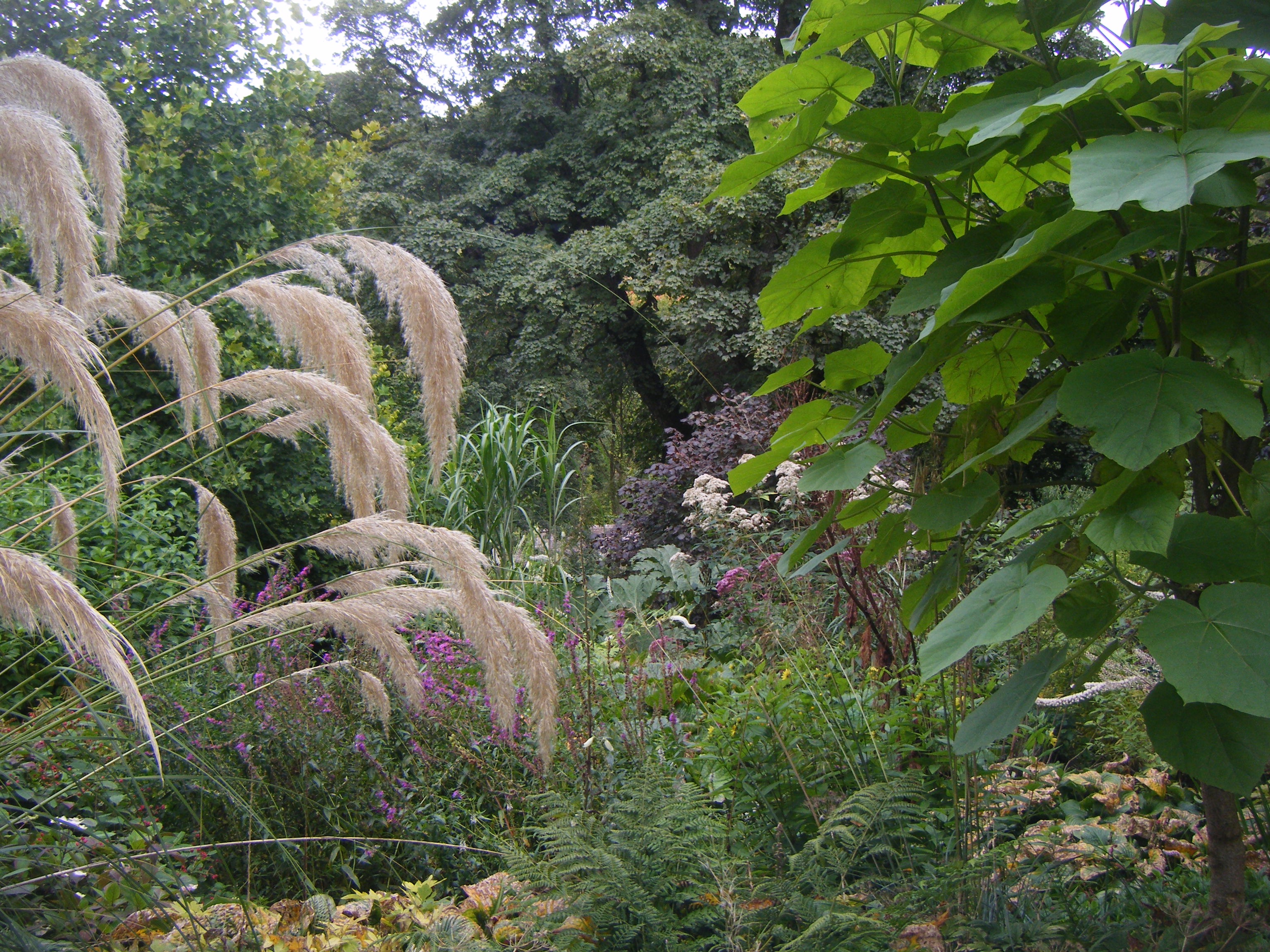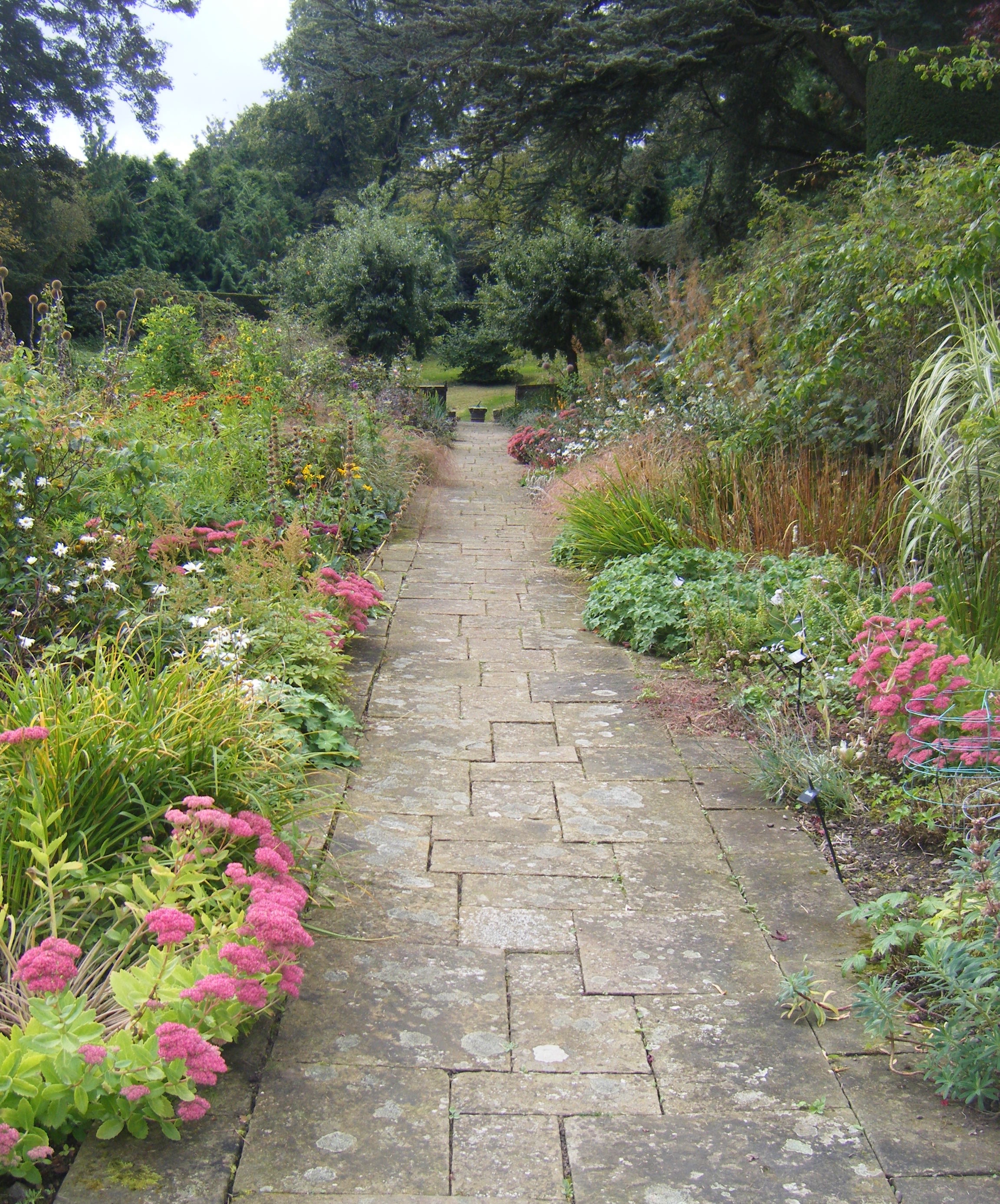A few weeks ago I was staying near Aberfeldy in Perthshire and having walked the delightfully rugged ‘Birks of Aberfeldy’, I decided to visit the tamer landscape of a garden open for Scotland’s Gardens Scheme https://scotlandsgardens.org/bolfracks
Bolfracks, how could I resist with a name like that, is open everyday from 1st April – 31st October. You enter through the summer house, look at the map and take the path which rises steeply behind.

A druidic specimen of an evergreen conifer Cryptomeria japonica, confronts us and with a twist of the trunk beckons us on up the slope,

where we find the graceful Acer griseum; we pause for a moment, breathe in the scent of autumn and take in the distant landscape emerging through its ascending branches.

It is so much about trees at this time of year, and where better do the birches grow than in this part of the world. This is the Chinese red birch Betula albosinensis.

There is plenty to see on the autumnal ground; curious cones,

the bewitching but poisonous white goblets of Colchicum autumnale ‘Album’,

and another little toxic gem, that iconic toadstool, the fly agaric Amanita muscaria.

Identified on the map and to the right of the path is the Old privy, a ruin now it provides comfort only to a variety of ferns.

A little further up the path is the pond where giant leaves of the Gunnera almost hide the dark peaty water where water lilies bloom. It rained all morning and now the sky is a generous blue revealing the distant hillside.

The well-made steps take us gently further up the garden. They are an art form in themselves.

The lichen clambers eagerly up the trunks of the trees, a sign of the air being so good here,


We weave in and out of the different areas, stepping through the gentle sleeping lions into the area known as the burial ground,

not for a moment a sombre place, but an area rich with colour of the maples that are beginning their autumnal display; how do they manage it ?

There is a touch of the alpine as we come to the Wendy house, but catching the sound of the distant stags beginning their rut we are reminded that we are in Scotland.

This is not a young garden, there are many mature shrubs; well planted, with much to see throughout the year. Plenty of engaging features like this wooden bridge,

a variety of dry stone gateways,

and flights of sturdy stone steps, through the moss-covered walls,

until we have reached the summit, where the path traverses along the top of the slope and with joyful colchicums growing under a multitude of roses that promise to bloom again next summer.

A path descends back down to the house, an herbaceous border running alongside showing that summer is not yet over, as there are still splashes of colour. The long descent emphasises the steepness and shows what a masterclass of gardening it is on a slope.

This garden was created during a time when teams of gardeners were in attendance, times have changed and it is easy to understand the need for modern maintenance, perhaps forgiving the slightly shaggy appearance of the lawn only to discover the mowing machine has crash-landed in a flowerbed;

maybe modern mowers are distracted by the appearance of a rainbow, even though it is somewhere over the River Tay.

There is a wide variety of Rowan trees that I did not know existed, this beauty is Sorbus sargentiana.

We leave the long border of rugosa roses running along the bottom of the garden, their ripe and delicious shiny red hips glowing with late summer happiness.

The garden has opened for the Scotland’s Gardens Scheme for some 47 years, with a change of owners in recent years it is admirable that the present owners still allow us to visit, and it is a delight.

********October*******

































































